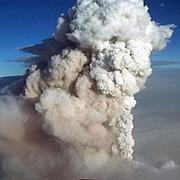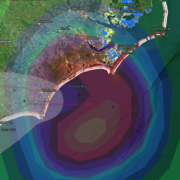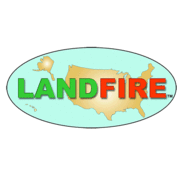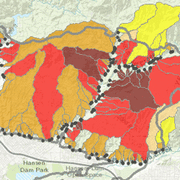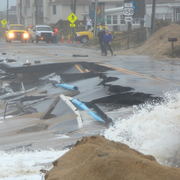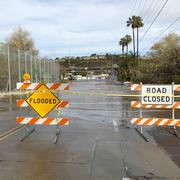Due to a lapse in appropriations, the majority of USGS websites may not be up to date and may not reflect current conditions. Websites displaying real-time data, such as Earthquake and Water and information needed for public health and safety will be updated with limited support. Additionally, USGS will not be able to respond to inquiries until appropriations are enacted. For more information, please see www.doi.gov/shutdown
Wildfire Hazards
Home
Programs L2 Landing Page
We carry out a wide range of wildfire-related science activities that span multiple USGS mission areas, including landscape ecology studies, geospatial support for fire response, burned area hydrology, and post-fire debris flow warnings.
Satellite Data Applications for Fire Science
Our satellite remote sensing research and applications are essential for providing required data for mapping fire fuels, assessing fire effects, monitoring fire danger, and measuring progress in implementing the National Fire Plan. Land management agencies, scientific communities, and citizenry affected by wildland fires can benefit from our work.
Monitoring Trends in Burn Severity (MTBS)
MTBS is a multi-year project designed to map the burn severity and perimeters of fire across all lands of the United States for the period spanning 1984 through 2010. The data generated by MTBS will be used to identify national trends in burn severity and evaluate the effectiveness of the National Fire Plan and Healthy Forest Restoration Act.
Post-Wildfire Landslide Hazards
Post-fire landslides are particularly hazardous because they can occur with little warning, can exert great force on objects in their paths, can strip vegetation, block drainage ways, damage structures, and endanger human life. Our focus is to develop tools and methods for the prediction of post-wildfire landslide activity and hazard delineation.
Fire Ecology
Ecosystems throughout the western U.S. are often dependent on a particular fire regime to reduce hazardous fuels and rejuvenate forests or even guide evolution of plant life and regulate ecological communities. Today fire’s role is more complicated. For example, fire can favor invasive plants and these invaders may, in turn, alter the fire regime.
Change and Disturbances
Organisms have different abilities to adapt to disturbances. Some disturbances can be catastrophic to one species and inconsequential to another. Our Forest and Rangeland Ecosystem Science Center (FRESC) scientists are studying the effects of disturbances on species, biogeochemistry, water quality, habitat connectivity and landscape patterns.
Wildfires: GEOMAC
Maps of current fire locations and perimeters in the conterminous 48 States and Alaska.
LANDFIRE Data Distribution
Map interface to view and download LANDFIRE data sets, receive alerts and notifications.
Emergency Assessment of Post-Wildfire Debris-Flow Hazards
We conduct post-fire debris-flow hazard assessments for select fires in the Western U.S. We use geospatial data related to basin morphometry, burn severity, soil properties, and rainfall characteristics to estimate the probability and volume of debris flows that may occur in response to a design storm.
Image of the Week - Southern California Wildfires Update
After a month, the wildfires of Southern California are nearly contained. Landsat 8 imagery shows the dramatic burn scars left behind.
At the USGS EROS Center, we study land change, operate the Landsat satellites, and maintain the longest, continuously acquired collection of images of the Earth's land surface.
USGS EROS Center (
...Understory - EROS LiDAR
Example of lidar-derived metric products of canopy structure. A) Image showing an area characterized by varied forest strands. (Red box shows from where profile data in E area taken.) B) Lidar-derived maximum canopy height. C) Lidar-derived height of low- to medium-height vegetation beneath the overstory canopy. D) Density of vegetation at 2-4 m within the canopy. Note
...Prescribed Burn — Tall Timbers Research Station, FL (Drone)
Drone footage of a prescribed fire at Tall Timbers Research Station, Tallahassee, Florida (April 19, 2017).
Post-wildfire Flood and Debris Flow: 2014 Silverado Fire
In 2014, the Silverado Fire burned approximately 4 km^2 in Orange County, California. After the fire, the USGS installed an automated rain-triggered camera to monitor post-wildfire flooding and debris flow at the outlet of a small 0.6 km^2 basin within the burn area. This video shows the initial surge and peak flow triggered by an intense rainstorm on July 19, 2015. The
...Science for a Risky World: A USGS Plan for Risk Research and Applications – USGS publishes strategic plan for examining risk
USGS explores opportunities to advance its capabilities in risk assessment, mitigation, and communication in new strategic plan.
USGS Science – Leading the Way for Preparedness
Learn About USGS Hazards Science and More About National Preparedness Month: The very nature of natural hazards means that they have the potential to impact a majority of Americans every year. USGS science provides part of the foundation for emergency preparedness whenever and wherever disaster strikes.
Follow National Wildfire Information in the Palm of Your Hand: GeoMAC Goes Mobile
The public can now access information about active wildfires across the country using a smartphone.
EROS Work Called 'Critical' to Wildfire Mapping, Response
Remotely-sensed data key to response in tracking danger in areas like Montecito
USGS on Fire: It’s not a matter of “if,” it’s a matter of “more fire science data please!”
Visit our new USGS fire webpage to learn how USGS fire science is making a difference
Point and Click to Track Wildfire Activity in the United States
Keep tabs on wildfire activity via this U.S. Geological Survey website, GeoMAC.
Igniting a New Trend in Public Safety
U.S. Geological Survey scientists and partners are taking technology to the next level, using unmanned aircraft systems (UAS), commonly called drones, to acquire both fire intensity and emissions data during prescribed burns.
September is National Preparedness Month
September is National Preparedness Month, a time to highlight the resources available to help you and your loved ones stay as safe as possible.
Discover Jemez Postwildfire Debris-Flow Hazards With the Click of a Mouse
A new interactive map and companion report from the U.S. Geological Survey allows residents living in and around New Mexico’s Jemez Mountains to see where they’re located in relation to postwildfire debris-flow hazards.
Hazard a Guess? The riskiest science quiz you will ever take!
In what year did the United States experience the most acres burned from wildfires (on record)?
Five Science Tools to Check Out — Get Prepared
Are you and your family ready for the next disaster or emergency? Get tips by joining America’s PrepareAthon!
Join America’s PrepareAthon! Practice what to do in the event of a disaster or emergency.
Join millions of people participating in America’s PrepareAthon! on Sept. 30. This campaign encourages the nation to conduct drills, discussions and exercises to practice what to do before, during and after a disaster or emergency strikes.


